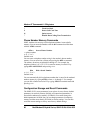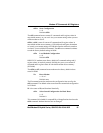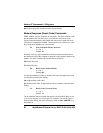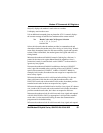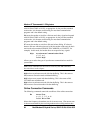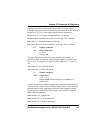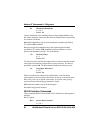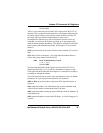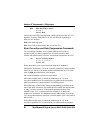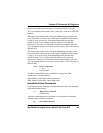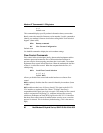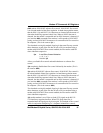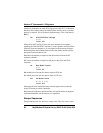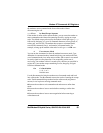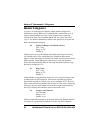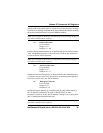
88 MultiModemISI Hybrid Series, ISIHP-2S/2U/4S/4U/4SD
Modem AT Commands & S-Registers
&Sn Data Set Ready Control
n = 0 or 1
Default: &S0
Controls the state of the Data Set Ready (DSR) signal on the RS-232/V.24
interface. Normally, DSR follows CD. You can force the signal high or
allow it to act normally.
&S0 forces DSR high (on).
&S1 allows DSR to act normally, that is, to follow CD.
Error Correction and Data Compression Commands
You can configure modems to any of three different V.42 modes of
operation (with or without compression): non-error correction, auto-
reliable, and reliable modes. You also can turn data compression on or off.
\Nn Error Correction Modes
n = 0, 1, 2, 3, 4, 5, or 7
Default: \N3
Select the modems error correction mode using the \N command.
\N0 disables the modems V.42 error correction capabilities, and the modem
functions as a non-error correction modem with data buffering. This is the
same as &Q6, described earlier in this chapter.
\N1 causes the modem to function in direct mode.
\N2 enables reliable mode, in which the modem uses its V.42 error
correction capabilities for all transmissions. In reliable mode, the modem
must be connected to a modem with the V.42 MNP protocol.
\N3 enables auto-reliable mode. During the handshaking procedures at the
start of the online connection, the modem queries whether the other modem
is using V.42 error correction. If the modem determines that the other
modem is using V.42, it switches itself into reliable (V.42) mode and
enables error correction. If it determines that the other modem is not using
V.42, the modem remains in non-error correction mode. (This is the same as
\N5 and \N7.)
\N4 enables reliable mode, in which the modem uses its V.42 error
correction capabilities for all transmissions. In reliable mode, the modem



